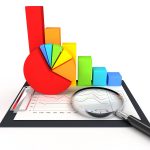AI is reshaping industries—and possibly government policy too. But is it helping decide U.S. tariff strategy?
AI in the White House: Rumor or Reality?
Artificial intelligence is no longer just powering voice assistants and chatbots—it’s helping doctors diagnose diseases, businesses forecast sales, and analysts predict economic trends. As the White House introduces new tariffs and trade measures, the question arises:
“Were the White House’s tariffs calculated with help from artificial intelligence?”
It’s a fair question, especially when the numbers seem so precisely targeted. Let’s dive into the facts and possibilities behind this buzz.
How AI is Already Used in Government
AI has found its way into several areas of federal governance. Here are a few examples:
- The Department of Defense uses AI for threat detection and mission logistics.
- The IRS leverages machine learning to identify fraudulent tax returns.
- The Treasury Department applies predictive analytics in economic modeling.
A 2023 report by Stanford’s AI Index revealed that U.S. federal investment in AI research hit $3.3 billion, signaling long-term interest in integrating AI into public service and strategy.
So, it’s not far-fetched to think economic policy—including tariffs—might be next in line.
Clues That Sparked the AI Tariff Rumors
Recent White House tariffs raised eyebrows in the economic community due to their highly targeted nature. Experts pointed out that the:
- Tariffs focused narrowly on strategic imports (like semiconductors and solar panels).
- Rate adjustments seemed to minimize domestic inflation risks.
- Rollout included interactive dashboards and scenario models, a move typically associated with advanced tech-driven planning.
“This level of precision in trade targeting almost feels machine-calculated,” said a trade analyst in The Hill.
These observations fueled theories that AI was at least consulted, if not leading, the decision-making process.
How AI Could Help Shape Tariff Strategy
If AI tools were involved, they could offer real strategic value. Here’s how:
1. Advanced Simulations
Machine learning models can simulate how different tariffs affect global supply chains, inflation, job markets, and consumer pricing.
2. Scenario Planning
AI can generate multiple “what-if” scenarios, helping policymakers weigh trade-offs before making final decisions.
3. Real-Time Adjustments
Algorithms can detect economic shifts faster than humans and suggest dynamic adjustments to tariff rates or targets.
4. Objective Analysis
When properly trained, AI can analyze vast datasets without political bias—though it depends heavily on the quality of input data.
“AI can uncover patterns that humans might miss, especially when analyzing years of trade data across thousands of variables,” said MIT economist Dr. Lena Hu in MIT News.
Any Official Confirmation from the White House?
As of now, the White House has not confirmed whether AI played a role in recent tariff decisions. Public briefings typically credit:
- The Office of the U.S. Trade Representative
- The National Economic Council
- The President’s Economic Advisors
Still, experts believe these bodies may be using AI-assisted modeling tools to make informed recommendations—even if the final call remains human.
What Would It Mean If AI Was Behind the Tariffs?
If AI was indeed used, it would mark a turning point in policy-making. Here’s what it could mean:
- Algorithmic governance becomes part of economic decision-making.
- New transparency and ethics concerns arise around public policy tools.
- Other nations may begin adopting AI for trade negotiations and economic warfare.
“The future of government policy could be a partnership between human judgment and machine precision,” said tech policy researcher Allison Nguyen.
FAQs
Is the White House using AI in its tariff decisions?
There’s no official confirmation, but economic analysts believe AI-assisted models may influence the process.
Can AI help set better tariffs?
Yes. AI can analyze massive datasets, simulate outcomes, and provide evidence-based recommendations for policymakers.
What are the risks of using AI in government?
Bias in training data, lack of transparency, and overreliance on models without human oversight are key concerns.
Conclusion: A Tech-Forward Future for Policy?
While there’s no hard evidence (yet) that AI calculated the White House’s tariffs, the signs point toward its growing influence in government policy. Whether used directly or indirectly, AI is clearly becoming a quiet force behind decisions that affect millions.
Expect more conversations like this in the near future—especially as AI models become more powerful, transparent, and integrated into public policy frameworks. Read our deep dive on how AI is amplifying cybersecurity risks.











